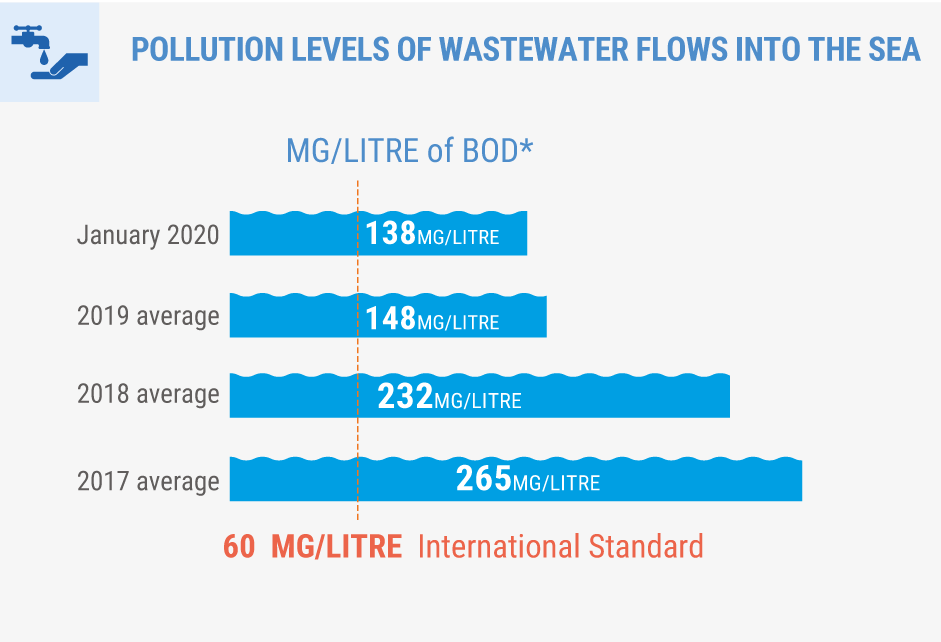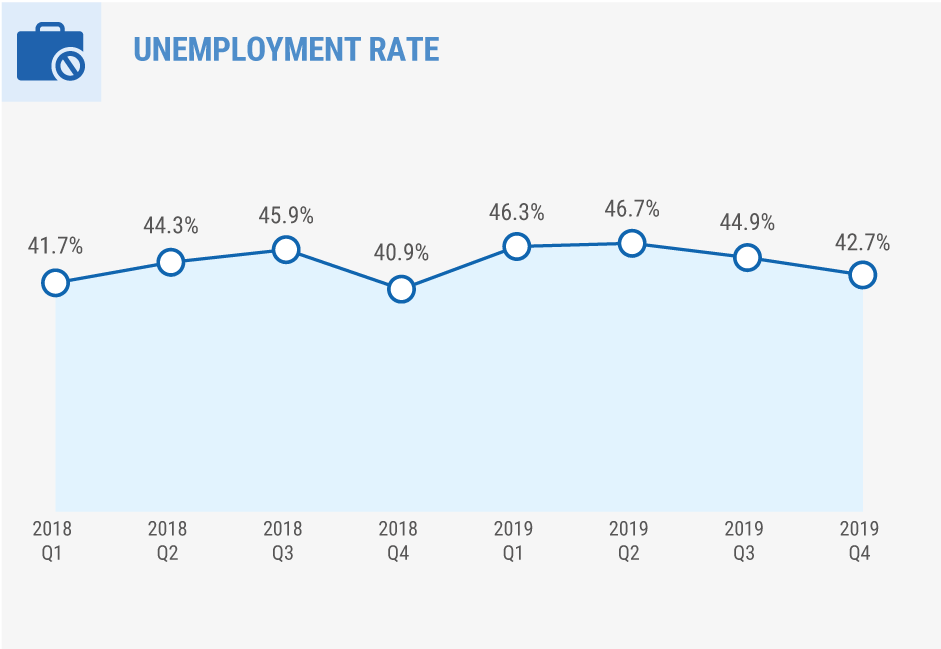Gaza Strip: Snapshot | January 2020
Monthly highlights
- The waiting time for some elective surgeries at Gaza’s main hospital (Al Shifa Hospital) sharply increased.
- The number of exits through Rafah and Erez crossings increased, compared to the 2019 monthly averages.
- The number of explosive/incendiary balloons, as well as rockets and mortars launched from Gaza into southern Israel increased.
- Increase in the volume of truckloads entering Gaza from Egypt and exiting Gaza via Israel.
- “Great March of Return” (GMR) demonstrations halted.
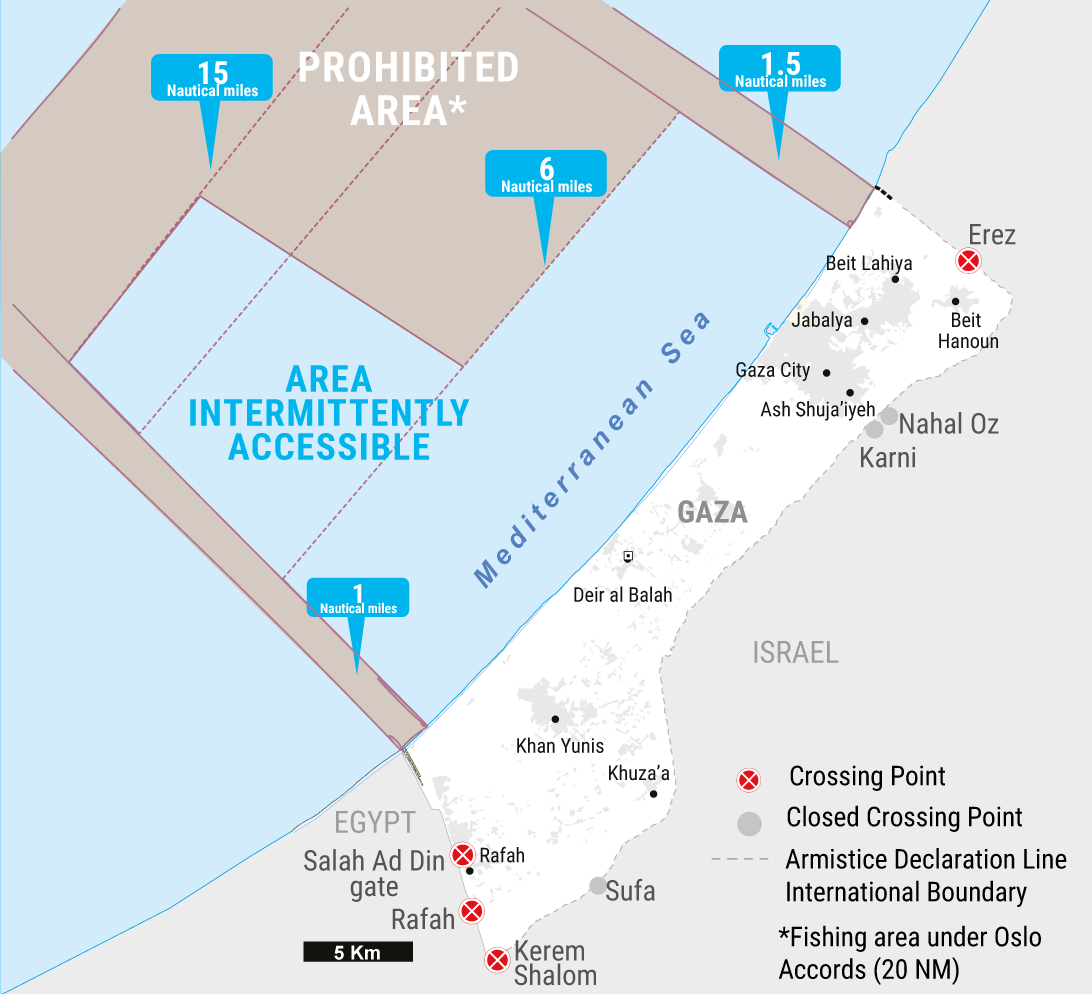
Protection of civilians
- The number of explosive/incendiary balloons, as well as rockets and mortars launched from Gaza into southern Israel increased: no casualties or damage reported. Israeli forces carried out airstrikes in Gaza, targeting armed groups’ facilities, resulting in two Palestinian children injured.
- Three Palestinians were shot dead after breaching the fence into Israel and reportedly throwing an explosive at Israeli forces.
- 16 Palestinians were injured in ad hoc protests against the US Middle East Plan, held near the perimeter fence with Israel.
- Two Palestinians, including a child, died of wounds sustained during GMR demonstrations in 2018 and 2019.
- Israeli airplanes sprayed farming lands with herbicides areas within Gaza located of up to 600 metres from the fence, damaging crops.
- On at least 87 occasions, Israeli forces opened warning fire in the areas adjacent to the perimeter fence and off the coast of Gaza, resulting in two Palestinian injuries, including a child.
Comprehensive data on conflict-related casualties is available at OCHA’s interactive database. Click here
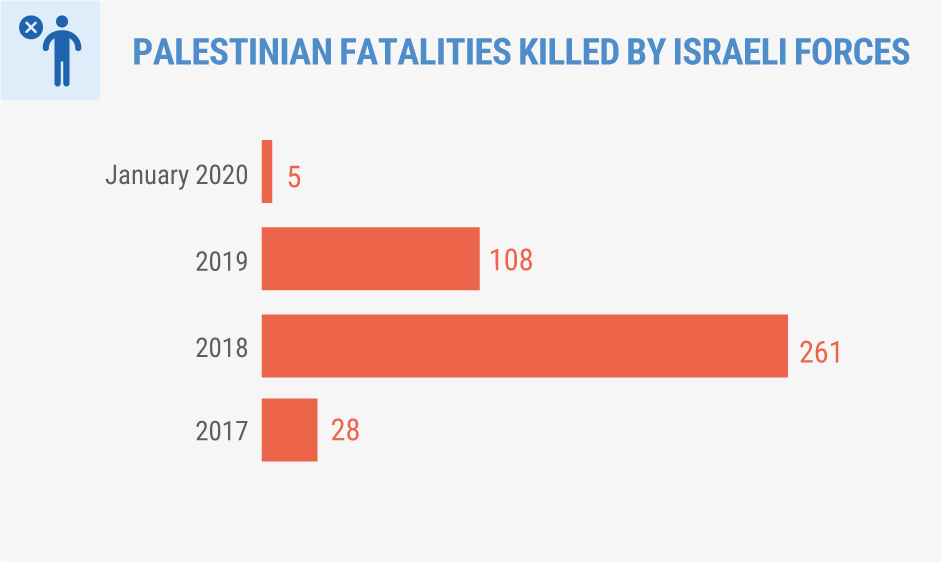
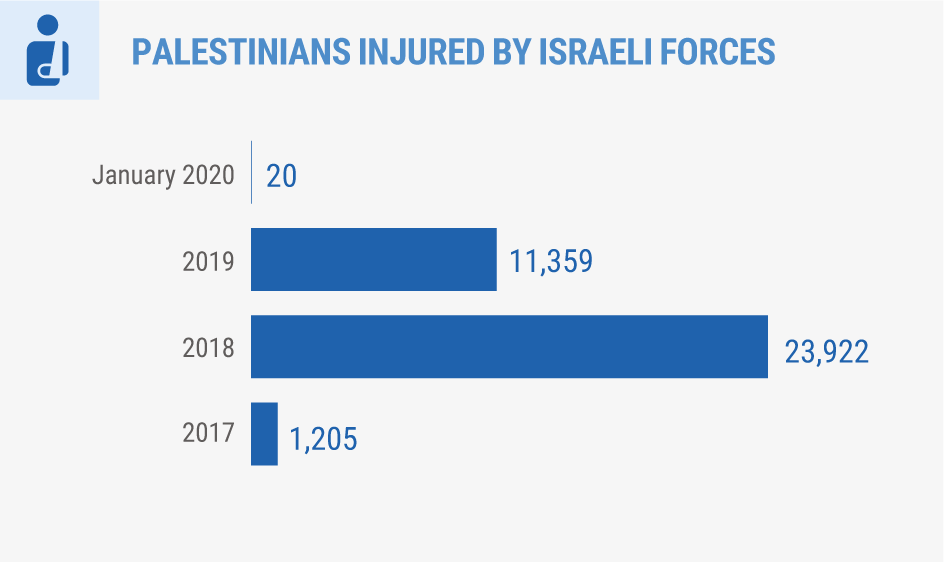
Access
- Some 27,000 exits from Gaza through the Erez crossing, the highest since the imposition of the blockade in 2007; 78 per cent of these exits were by holders of a “trader” permit, many of whom are believed to be day labourers.
- Around 6,700 exits from Gaza through the Rafah crossing with Egypt, slightly above the monthly average in 2019 (6,500 exits).
- 442 truckloads of locally-produced goods were allowed to exit Gaza via the Kerem Shalom crossing with Israel, up 11 per cent compared with January 2019 (at the height of the cash crop season).
- 1,114 truckloads of goods entered Gaza through the Rafah crossing (Salah A-Din gate), a 76 per cent increase compared to the monthly average in 2019.
- Israel allowed the entry of about 6,000 vehicle tires, reversing a ban imposed in April 2018 in response to the burning of tires during GMR.
Comprehensive data on Gaza crossings is available at OCHA’s interactive database. Click here
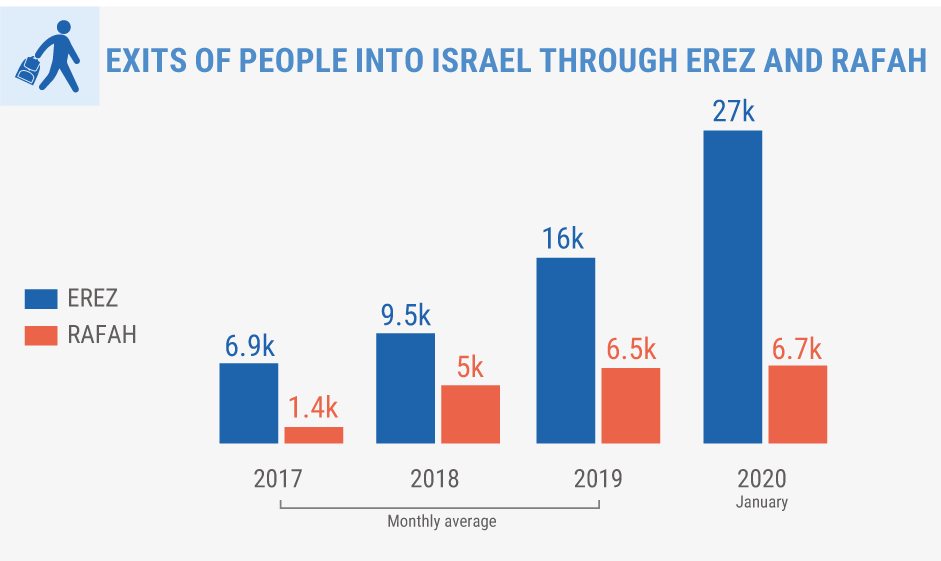
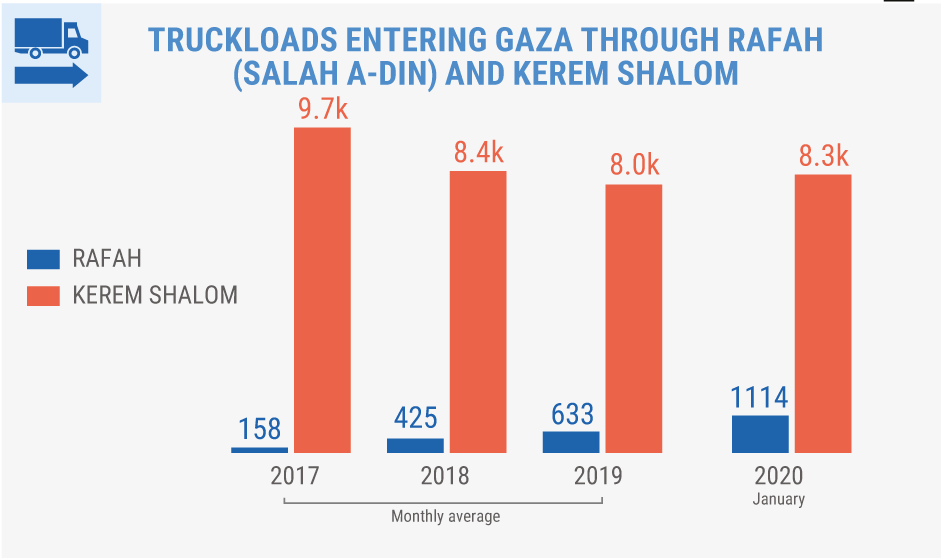
Services, Livelihoods and Shelter
- Water supply to households reached 82 liters per capita per day (l/c/d) during January, a slight increase from the 2019 average, but below the international recommended standard of 100 l/c/d.
- Pollution levels of wastewater discharged to the sea reached a six-month high (138 mg/liter).
- Approximately 100 families were temporarily displaced/impacted due to the flooding of their homes following heavy rains.
- The waiting time for ear, nose and throat elective surgeries at Gaza’s main hospital (Al Shifa) increased from 16 to 20 months between December 2019 and January 2020, following the end of two projects providing emergency funding for such surgeries.
- Unemployment in Gaza increased to 43 per cent in the fourth quarter (Q4) of 2019, compared with 41 per cent in Q4 2018, and 38 per cent Q4 2017.
An interactive database on electricity supply in Gaza is available at OCHA’s website. Click here
